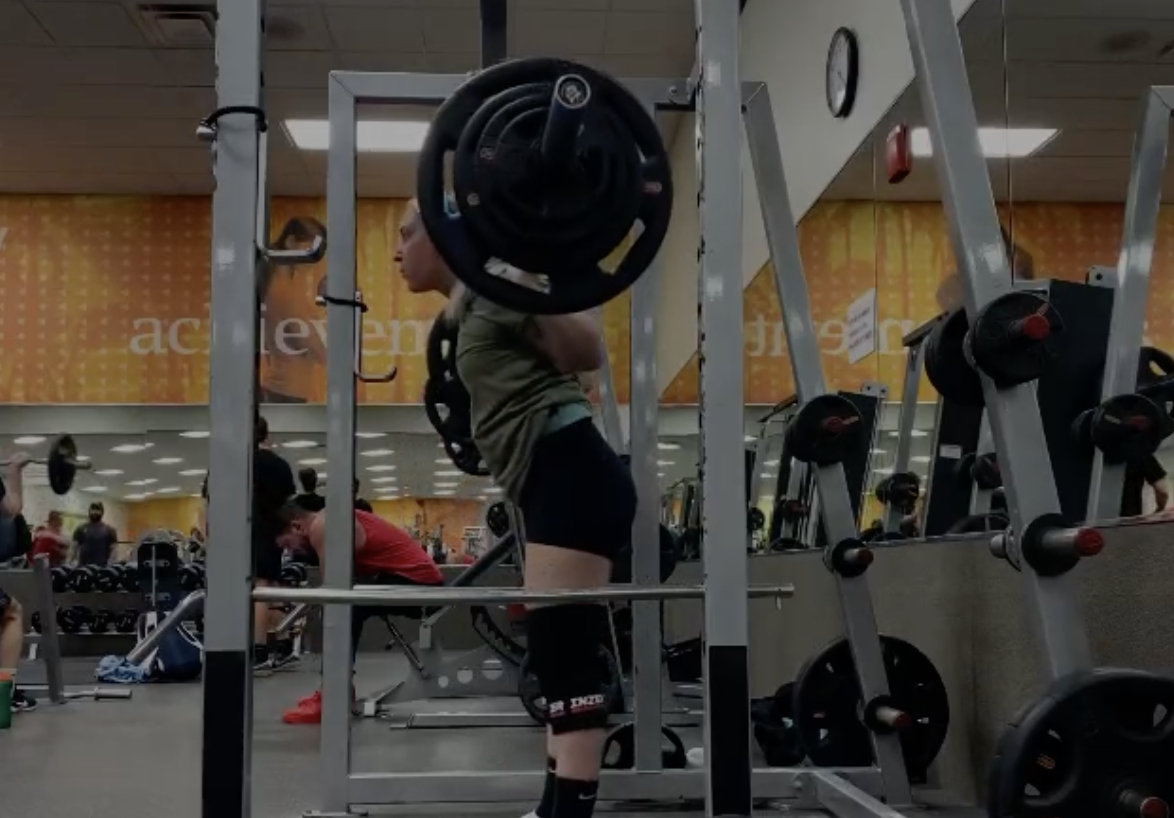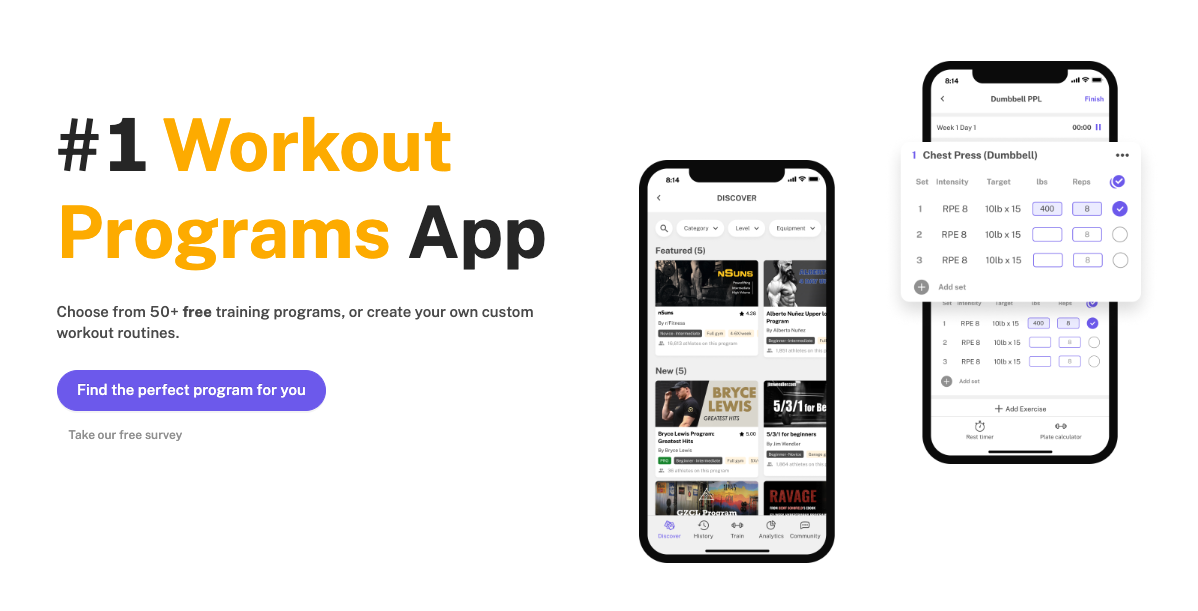Accessory Exercises for Powerlifting: Enhance Your Lifts
Written by the Boostcamp staff
Boost your compound numbers with better accessories
When it comes to powerlifting, many people think the only exercises that need to be completed are the big 3 compound lifts, which are the squat, the bench, and the deadlift. While those compound movements are the main pieces of the powerlifting puzzle, especially when it comes to a competition, they are not the only exercises that a powerlifter focuses on in their training routines. One of the biggest mistakes that can be seen in the gym is powerlifters focusing way, way, way too much on their compound work. If you are a powerlifter, then the vast majority of your training needs to involve the squat, bench press, deadlift, or slight variations of those lifts, but how do you strengthen certain components of those lifts? This is where accessory movements for powerlifting, such as leg presses, or arm workouts, maybe even rack deadlifts, and much more come into play.
While accessory movements are often seen as something utilized more by bodybuilders, they are actually great for powerlifters. A true powerlifting program is not complete without accessories, as these are the movements that truly help a lifter to establish a mind-muscle connection, and build up the overall strength and size in the muscles that you need to help boost your compound numbers and gain muscle mass on your whole body. It is crazy to think that people neglect accessory movements like face pulls, which can help improve upper back strength and shoulder stability, leading to better compound lifts and muscle growth. But, that is a conversation we will dive into deeper.
Let’s get started.
What is an Accessory Movement in Lifting?
The first thing to establish is what an accessory movement is, and why these things are not specifically for bodybuilders. These accessory movements are exercises that support and increase your performance in your main, primary lifts, helping to increase your one rep max when it comes time to be on the platform. They do this by targeting specific muscles to fix weak points in the physique or strength spots, ultimately leading to an increase in muscle size through a combination of compound and isolation exercises. Accessory movements, also known as supplemental exercises, can also help increase strength by targeting smaller synergist muscles that may limit the amount of weight you can lift during your main lifts at a controlled tempo.
For example, if your bench press is lacking, that could be because your front delts or your triceps are weaker than they should be, as they are recruited heavily during the bench press. That being said, you would focus on doing accessory movements to target those muscle groups and bring them up to par, which would transfer over to your bench press. Accessory movements, such as rows and pull-ups, also help build your back muscles that can help while you perform movements such as the deadlift, but they still too often get neglected in powerlifting training. This balance between the anterior and posterior chain is crucial for overall strength and shoulder health.
All that being said, what are the best accessory movements for powerlifting?
The Best Accessory Movements for Powerlifting
Pull-Ups and Chin Ups
Pull-ups and chin-ups, technically these are two exercises, but we are looping them into one category because of how similar they are, and they are one of the best accessory movements for powerlifters to throw into their training. Often referred to as the upper-body squat, because they help to develop so much of the back in terms of both size and strength.
Pull-ups and chin-ups incorporate the lats, rhomboids, rear delts, mid traps, and even some biceps, and each of those muscles play a vital role in the big 3 power lifts, yes even the squat and the bench press. In each of those lifts, it is crucial to keep the upper body tight, which is nearly impossible without having those muscles developed. Additionally, incorporating other pulling movements such as lat pulldowns can also help strengthen these muscles and improve performance in the powerlifts.
Dips
Dips are an old school exercise used by bodybuilders and powerlifters alike. If you can get a deep enough stretch, they are great for developing both aesthetics and strength in the chest, shoulders, and triceps. Dips also help to switch up your training to add a little variety.
While most pressing exercises performed by powerlifters will not be on the vertical plane (bench press and overhead press being two great examples), it is still good to have developed strength in all planes, and dips help that, making them one of the best accessories for powerlifting.
Dumbbell or Barbell Shoulder Press
Strong, well developed shoulders can help you out in a variety of ways when it comes to powerlifting. Sure, strong shoulders will clearly help a powerlifter with their progress on the bench press, but believe it or not, strong shoulders will also help with squatting. This is because strong shoulders help to develop a shelf for the bar to sit on, and helps to lower the risk of injury in all 3 of the major power lifts. Incorporating accessory movements such as the dumbbell or barbell shoulder press can aid in overall strength development and contribute to a more resilient and capable body.
Split Squats and Lunges
When it comes to the best powerlifting accessories, unilateral movements have to be included, and split squats or lunges are some of the best exercises to do as they really put your legs to the test. Unilateral movements are crucial for picking out imbalances between limbs and muscles, and they also help with stability, balance, and many times mobility.
As a powerlifter, focusing on the big 3 power lifts can get the body used to certain movements and ranges of motion. Throwing unilateral movements into your accessory work helps to switch it up and shock the muscles, forcing them to develop and progress in different ways.

Lunges and split squats are great for developing lower body strength and size. Split squats and lunges help to develop the legs overall (quads, hamstrings, calves, and glutes, exposing weaknesses and correcting them. While they may not be the most fun exercise, they are a great accessory movement for powerlifting.
Hip Thrusts
This movement may seem like something just for women to build their glutes, but hip thrusts are such a great accessory movement for powerlifting for a variety of reasons. Hip thrusts transfer over largely to two of the big three lifts, squats and deadlifts. Hip thrusts build strength in the glutes, which are key muscles utilized in the squat and the deadlift. Additionally, hip thrusts are an effective way to train the posterior chain, which can help prevent knee issues and improve overall squat performance. Incorporating hip thrusts into your lower body training is a great idea for improving your powerlifting performance. Good morning to all the powerlifters out there!
Hip thrusts also simulate the lockout portion of a squat or a deadlift. That being said, mastering the hip thrust helps you at the top part of your deadlifts and squats.
When to Incorporate Powerlifting Accessories Into Training Routines
Now, you do not need to do each of these exercises every time you are training, but you do not want to leave them out. The best option is to find a powerlifting program that incorporates accessory lifts in with your big 3 lifts during training. A good program will also hold you accountable and help you to see your progress on your lifts, as you incorporate things like progressive overload into your routines and see your numbers going up.
Finding Powerlifting Routines
When it comes to finding some great powerlifting programs, you would want to find a program that caters to your needs, gives you good accessories to do, and guides you in the right direction, making sure that you are making the most gains. If you are looking to stay on track and continue with linear progression, then finding a good workout program is the key. Where do you look for a good workout program? Check out the Boostcamp App for some great programs.
From push pull legs to upper lower, Boostcamp is home to over 50 FREE workout programs that consist of strength, hypertrophy, or functional fitness, or both. However, with Boostcamp, you don’t have to just follow a pre-written program, you also can create your own program as well, and track your progress to make sure you are on the right track. That being said, when you are looking to incorporate some arm training to further your powerlifting progress, then check out Boostcamp.
If you are not sure where to find a good program, feel free to check out the Boostcamp App! The Boostcamp App has over 50 free training programs from a variety of coaches. Programs are based around strength, hypertrophy, and so on.
Powerlifting Accessories Wrap Up
Overall, accessories for powerlifting are movements that really help to develop weak points and fix imbalances. They are crucial for skyrocketing your progress and really helping to make your PRs go forward. When it comes to incorporating them into your training, finding a good program to help with that is key. Additionally, incorporating accessory exercises into your powerlifting routine can help maintain joint and tendon health, as well as improve movement quality and address any imbalances created by the main lifts. Some important accessory movements to consider include exercises for the abs, which can help strengthen the core and improve overall stability during lifts. It is important to also consider exercises that improve work capacity, as having a strong engine is crucial for reaching your limit strength potential. Don't forget to incorporate quad-focused exercises like Lunges, Bulgarian split squats, and Hack squats into your routine to target any weakness in your quads. Do you agree with our list of the top powerlifting accessory movements? Don't forget to incorporate these accessories into your routine and watch your PRs and overall performance drastically improve.
Check out the Boostcamp App for some great programs. Also, be sure to follow Boostcamp on Instagram and subscribe on YouTube!


